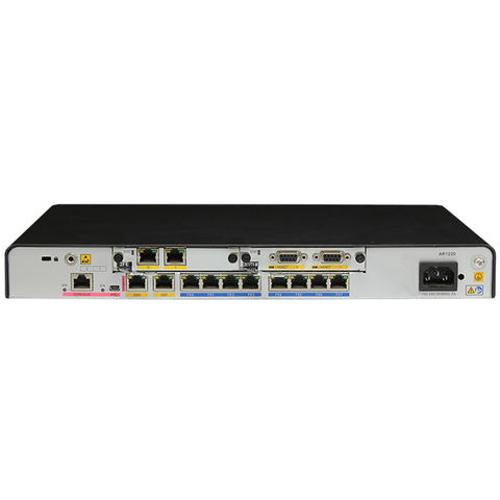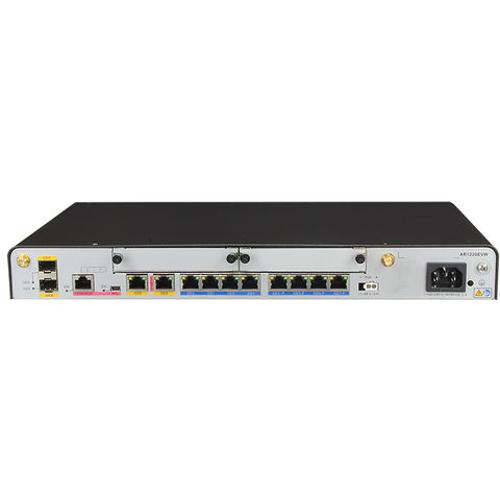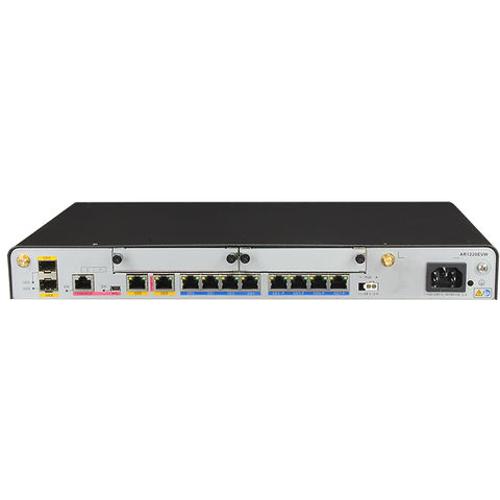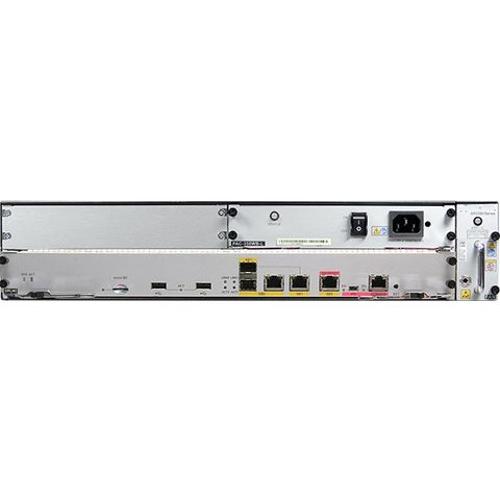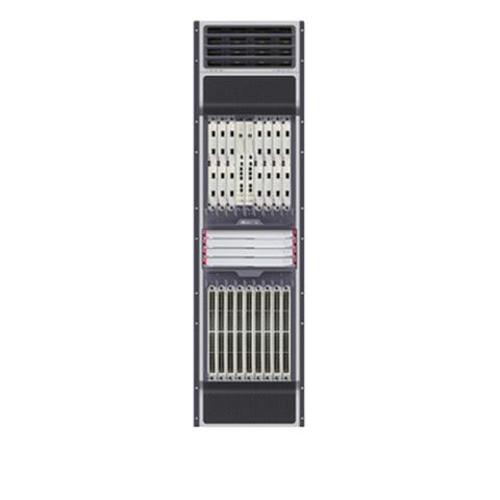Bras ME60-X8 Smart Router 100G Wifi
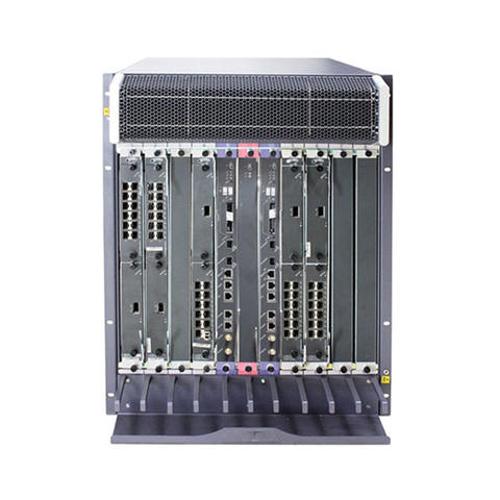
Short Description:
| Attribute | |
| ME60-X16 | |
| ME60-X8 | ME60-X3 |
| Switching Capacity | |
| 12.58 Tbps | |
| 7.08Tbps | 1.08 Tbps |
| Forwarding Performance | |
| 3200 Mpps | |
| 1600 Mpps | 300 Mpps |
| Number of Slots | |
| 22 slots, including 2 MPUs (1:1 backup), 4 SFUs (3+1 backup), and 16 LPUs | |
| 11 slots, including 2 SRUs (1:1 backup), 1 SFUs (2+1 backup), and 8 LPUs | 5 slots, including 2 MPUs (1:1 backup) and 3 LPUs |
| Dimension (W×D×H) | |
| 442mm×650mm×1420mm(32U) | |
| 442mm×650mm× 620 mm(14U) | 442mm×650mm×175 mm (DC 4U)442mm×650mm×220 mm (AC 5U) |
| Maximum power consumption | |
| 6500W(100G) | |
| 3300W(100G) | 1100W |
| Weight in full configuration | |
| 267kg | |
| 130kg | 41kg (DC)51kg (AC) |
| Interface type | OC-192c/STM-64c POS OC-48c/STM-16c POSOC-12c/STM-4c POS OC-12c/STM-4c ATMOC-3c/STM-1c POS OC-3c/STM-1c ATM10GE-WAN/LAN 10*1000Base12*100/1000Base 2*10 GE-WAN/LAN 20*100/1000Base E3/CT3CE1/CT1 E1/T1 |
| BRAS | User access protocol:PPPoX, IPoX, 802.1X, DHCP, and NDUser authentication protocol:PAP, CHAP, MSCHAP, RADIUS, and HWTACACSUser accounting protocol:RADIUS, HWTACACS, and COPSUser authorization protocol:RADIUS, HWTACACS, and COPSPolicy protocol:COPS, COA |
| IPv4 | Supports the static routing protocol and IPv4 dynamic routing protocols such as RIP, OSPF, IS-IS, and BGP-4. |
| IPv6 | Supports various technologies for transition from IPv4 to IPv6: manual tunnel configurations, automatic tunnel configurations, IPv6-to-IPv4 (6-to-4) tunneling, Generic Routing Encapsulation (GRE) tunneling, and Intra-Site Automatic Tunnel Addressing Protocol (ISATAP) tunneling.Supports IPv4 over IPv6 tunneling and IPv6 Provider Edge Router (6PE).Supports the IPv6 static routing protocol.Supports IPv6 dynamic routing protocols such as RIP Next Generation (RIPng), OSPFv3, IS-ISv6, and BGP4+.Supports IPv6 neighbor discovery and path Maximum Transmission Unit (PMTU) discovery.Supports Transmission Control Protocol Version 6 (TCP6), ping IPv6, traceroute IPv6, socket IPv6, static IPv6 Domain Name System (DNS), specifying the IPv6 DNS server, Trivial File Transfer Protocol (TFTP) IPv6 client, and IPv6 policy-based routing.Supports Internet Control Message Protocol Version 6 (ICMPv6) Management Information Base (MIB), User Datagram Protocol Version 6 (UDP6) MIB, TCP6 MIB, and IPv6 MIB. |
| MPLS | Supports LDP over TE, VPLS, H-VPLS, policy-based routing in VPN.Supports MPLS L2VPNs in either Martini or Kompella mode.Supports VLL/VPLS access L3VPNs.Supports QinQ, MPLS/BGP L3VPN, and inter-AS VPN Option A/B/C.Supports Asynchronous Transfer Mode (ATM) E1, Inverse Multiplexing over ATM (IMA), and Time-Division Multiplexing (TDM) PWE3.Supports MPLS-TP |
| Layer2 Feature | Supports IEEE802.1q, IEEE802.1p, IEEE 802.3ad, and IEEE 802.1ab.Supports the Spanning Tree Protocol (STP), Rapid Spanning Tree Protocol (RSTP), Multiple Spanning Tree Protocol (MSTP), RRPP, DHCP+, VLAN switching, and user binding. |
| Reliability | Supports BGP GR, IS-IS GR, and OSPF GR.Supports LDP GR, Resource-Reservation Protocol (RSVP) GR, and Non-Stop Forwarding (NSF).Supports VLL/VPLS/L3VPN GR/NSF.Supports multicast NSF.Supports BGP/IS-IS/OSPF/LDP/RSVP-TE/PIM/ISSU Non-Stop Routing (NSR).Supports In-Service Software Upgrade (ISSU).Supports fast convergence of Interior Gateway Protocols (IGPs), BGP, and multicast routingSupports IP/LDP/VPN/TE/VLL FRR.Supports IP Auto FRR.Supports BFD for the static routing protocol and protocols such as IS-IS, RSVP, LDP, TE, Label Switched Path (LSP), PW, OSPF, BGP, VRRP, PIM, and RRPP.Supports RRPP.Supports MPLS OAM and Ethernet OAM, Y.1731.Supports backup of service routers, PW redundancy, and PWE3 end-to-end protection.Supports E-Trunk, E-APS, E-STP. |
| QoS | Supports Weighted Random Early Detection (WRED), DS-TE capability with a maximum of eight CTs, five-level H-QoS scheduling, VLL/PWE3 QoS, and MPLS H-QoS.Supports the last mile QoS.Supports multicast replication of IPoE access users. |
| DAA | ME60 supports DAA(Destination Address Accounting)feature, providing refined subscriber management with differentiated service and accounting in IP networks. |
| iVSE | Fast channel change (FCC) and retransmission (RET) of BTV programs on L3/L3VPN networksVideo Quality of Experience (VQE), including Media Delivery Index (MDI) and V-MOS 2.0Distributed quality monitoring of BTV and VOD programs on L3/L3VPN/L2VPN networksIntegrated quality monitoring of BTV and VOD programs on L3 networksInterconnection with other HW devices in providing IPTV servicesSimple Object Access Protocol (SOAP)Entitlement Control Message Protocol (ECMP)Dynamic Inspection Protocol (DIP)Processing FCC requests scheduled by the Request Routing Server (RRS)Selective transmission of video data through FCC |
| CGN | The Carrier Grade NAT features supported by the ME60 include NAT444 and DS-Lite.There are two NAT deployment models:Integrated deploymentNo changes or small changes are made to the access point on the network.CGN devices are deployed on aggregation nodes to provide CGN functions.Distributed deploymentIt is used on a newly deployed or an upgraded access network. A card is installed on the BRAS, giving the BRAS the ability to support CGN features. CGN functions are implemented by different BRASs on the network.The following describes the CGN features suported by the ME60:NAT444DS-Lite |
| Environmental requirements | Long-term ambient temperature: 0~45°C |
xxxxxxx.
